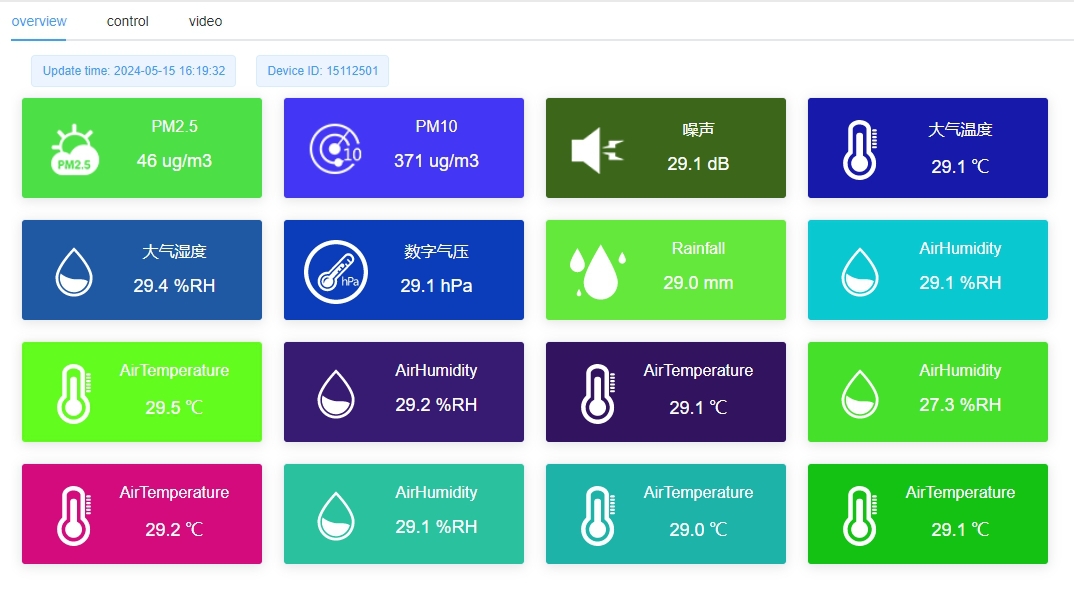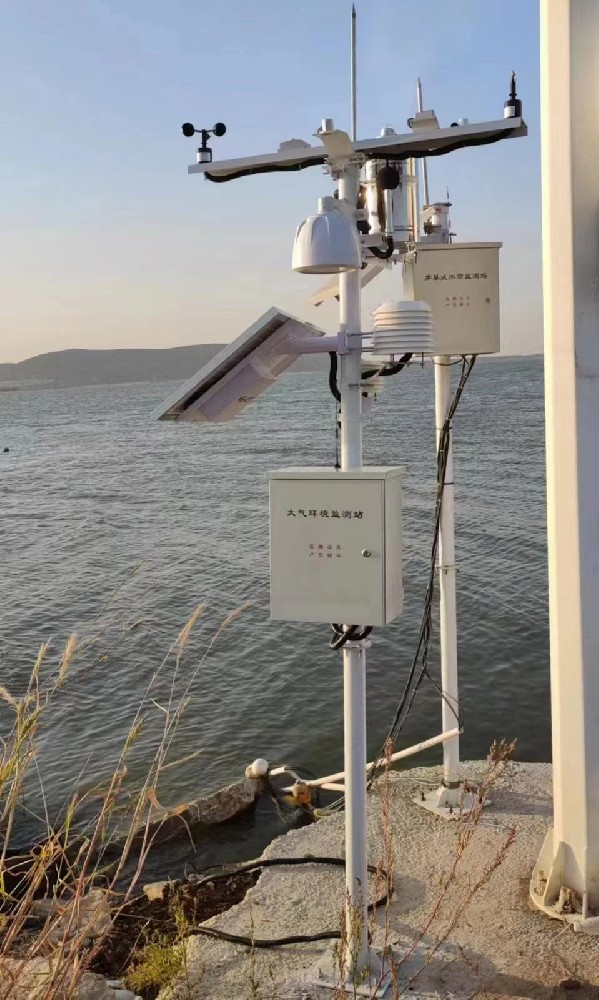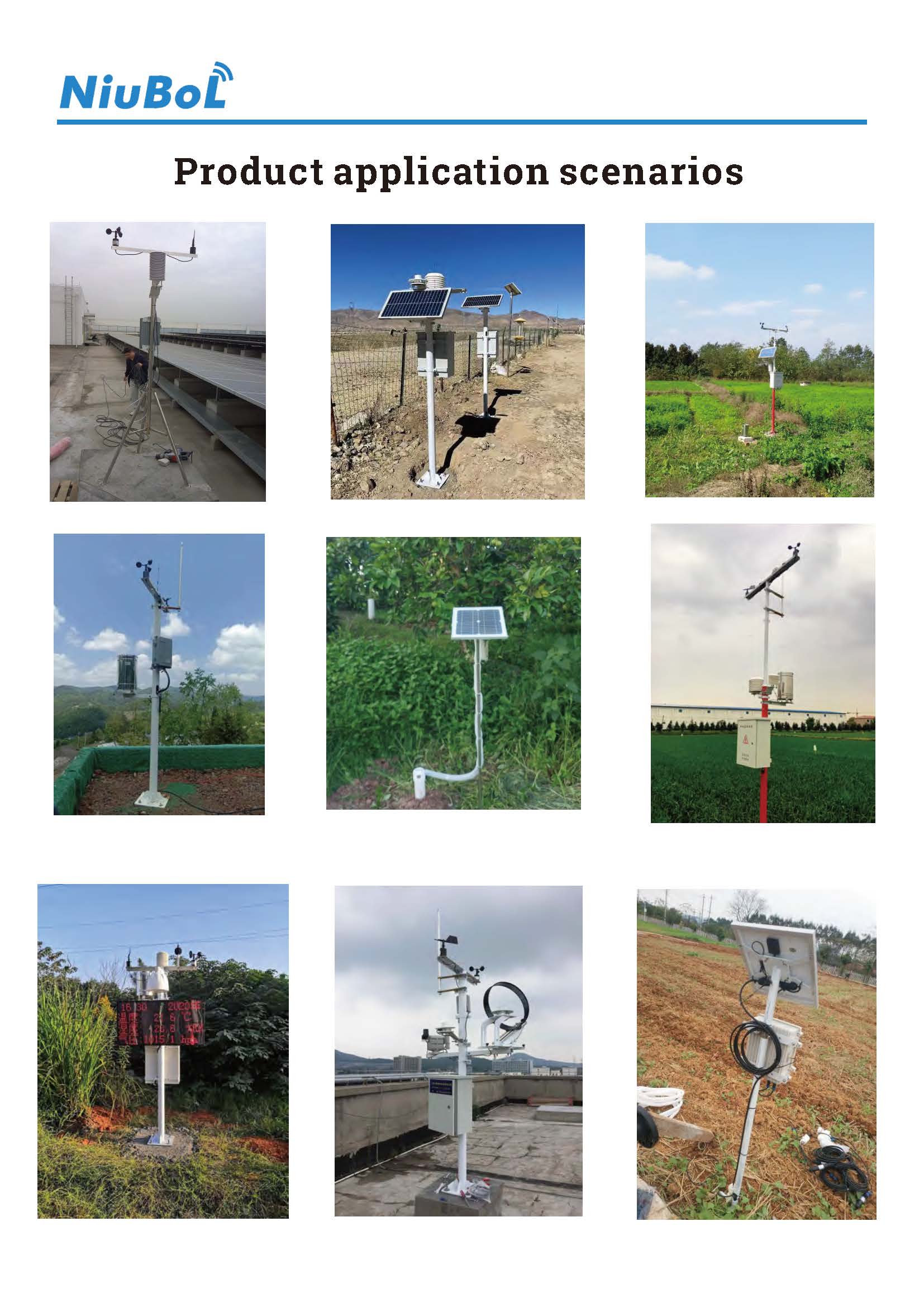

— Blogs —
—Products—
 Consumer hotline +8618073152920
Consumer hotline +8618073152920 WhatsApp:+8615367865107
Address:Room 102, District D, Houhu Industrial Park, Yuelu District, Changsha City, Hunan Province, China
Product knowledge
Time:2025-11-08 11:12:22 Popularity:437
In modern agriculture, energy management, and home environmental monitoring, weather data directly influences productivity, safety management, and living comfort. WiFi and wireless weather stations integrate high-precision sensors, IoT technology, and smart data platforms to provide round-the-clock remote monitoring, offering a scientific basis for decision-making.
Wireless weather stations can collect key environmental indicators like temperature, humidity, wind speed, precipitation, wind direction, and solar radiation in real-time. They transform complex environmental data into actionable insights, offering intelligent solutions across applications, from agricultural irrigation to energy management and home environmental monitoring.
Wireless weather stations support WiFi, LoRa, NB-IoT, or 4G communication methods, uploading data to cloud platforms or local systems in real-time. Users can access the data from their mobile phones or computers anytime, eliminating the need for on-site inspections, greatly enhancing management efficiency.
The performance of wireless weather stations depends not only on their hardware design and wireless connectivity stability but also heavily on the quality of sensors. Sensors are the key components of wireless weather stations, responsible for real-time monitoring and collecting environmental data. High-precision and reliable sensors ensure the accuracy and long-term stability of weather data, making them suitable for various meteorological analysis and forecasting needs. Below are detailed descriptions of common sensors and their working principles:
Temperature and humidity sensors are among the most common in weather stations, used to measure air temperature and humidity. These readings are crucial for climate assessment, agricultural monitoring, HVAC system control, etc. High-precision temperature and humidity sensors typically have the following accuracy:
- Temperature accuracy: ±0.2°C, capable of precisely measuring and reflecting environmental temperature changes.
- Humidity accuracy: ±2% RH, providing accurate relative humidity data suitable for precise monitoring in extreme weather conditions.
These sensors use capacitive, thermistor, or resistive elements to detect changes in temperature and humidity. High-quality temperature and humidity sensors are rigorously calibrated and protected, ensuring stable performance in various environmental conditions.
Wind speed and direction sensors are used to measure wind speed and direction and provide precise wind monitoring through multidimensional data analysis. These sensors are essential for climate forecasting, navigation, aviation, and meteorological research. Typical accuracy of wind speed and direction sensors:
- Wind speed accuracy: ±0.3 m/s, allowing accurate recording of even small wind speed changes.
- Wind direction accuracy: ±3°, capable of precisely capturing wind trend changes.
These sensors typically use mechanical or electronic detection devices, such as rotating cup anemometers or hot-wire anemometers, to measure physical changes in airflows and calculate wind speed and direction. They maintain good stability even in extreme weather.
Rain gauges are used to measure precipitation and are widely applied in agricultural irrigation, urban drainage, and meteorological research. Their high precision is crucial for precipitation forecasting and flood control planning. Typical accuracy of rain gauges:
- Rain gauge accuracy: 0.2 mm or 0.1 mm, allowing precise detection of even slight changes in rainfall to ensure that every rainfall event is accurately recorded.
Modern rain gauges typically use tipping bucket or optical technologies, effectively differentiating the intensity and duration of rainfall. This high-precision rain monitoring helps with disaster early warnings and water resource management.
Solar radiation sensors measure the intensity of solar radiation, typically used for studying climate change and agricultural light requirements. The accuracy and reliability of these sensors directly impact the weather station's evaluation of solar energy. Solar radiation sensors commonly meet the following standards:
- ISO 9060 Class B accuracy: This standard defines the accuracy and applicability of solar radiation sensors. Class B sensors are suitable for most weather stations and provide moderate accuracy solar radiation data, ideal for general climate studies.
These sensors often use thermocouples or photodetectors to capture solar radiation, converting light energy into electrical energy to measure radiation intensity with high reliability and stability.

- Real-time trend graphs and historical data analysis
- Crop evapotranspiration (ETc) calculation and irrigation optimization recommendations
- Photovoltaic power prediction and operation optimization
- Wind speed, rainfall, and temperature threshold alarms
Through smart analysis, agricultural and energy managers can quickly convert data into decisions, realizing "data-driven management."
Wireless weather stations collect soil moisture, rainfall, and environmental data, providing scientific grounds for irrigation systems to supply water as needed:
- Preventing over-irrigation, saving water resources
- Automatically adjusting irrigation plans based on evapotranspiration and rainfall forecasts
- Enhancing crop growth efficiency and reducing water stress
Wireless weather stations provide temperature, humidity, wind speed, and rainfall data to optimize fertilization, pesticide spraying, harvesting, and planting timing:
- Pesticide spraying during low humidity and no-wind periods, improving efficacy and reducing drift
- Optimizing operation windows based on weather conditions, reducing losses
- Extreme weather alerts ensure crop safety
Historical data can be used for:
- Crop rotation planning
- Climate trend analysis
- Agricultural risk management
Wireless weather stations help agriculture shift from experience-based to science-based decision-making, supporting sustainable production models.
Wireless weather stations can monitor solar intensity, module temperature, and environmental humidity in real-time:
- Real-time assessment of photovoltaic system performance
- Optimizing cleaning and maintenance schedules
- Improving power generation prediction models, enhancing energy dispatch accuracy
By deploying multiple wind speed and direction sensors, a three-dimensional wind field model can be established:
- Optimizing wind turbine layout and wake control
- Wind speed anomaly alarms to ensure equipment safety
- Enhancing overall power generation efficiency and system reliability
Wireless weather station data can be integrated with energy management systems to enable:
- Smart scheduling and power prediction
- Wind-solar complementary control optimization
- Reducing risks of energy surplus or shortage

Wireless weather stations also have significant value in homes, offices, and small commercial environments:
- Real-time monitoring of indoor and outdoor temperature and humidity, enhancing comfort
- Providing weather warnings for better daily activity planning
- Integration with smart home systems to automatically adjust air conditioning or humidifiers
- Cloud data storage and analysis to continuously optimize home environment management
- Data accuracy and sensor quality
- WiFi remote monitoring capability
- Ease of use and user interface
- Compatibility and expandability
- Price and brand reputation

A: Temperature ±0.2°C, humidity ±2% RH, wind speed ±0.3 m/s, radiation sensor ISO 9060 Class B.
A: The integrated quick-install design allows for installation in 30 minutes.
A: Data can be transmitted via public cloud, private cloud, or local servers.
A: Yes, they support OEM/ODM, with the option to expand to include soil EC, CO₂, leaf moisture sensors, and offer exclusive data analysis modules.
Greenhouses, farms, photovoltaic stations, wind farms, and home offices, operating stably in all weather conditions.
Yes, all recommended products support WiFi remote viewing and allow access to historical data via mobile apps or cloud platforms.
WiFi and wireless weather stations cover three main application scenarios: agriculture, energy, and home use, serving as core tools for smart management and remote monitoring. Through real-time data collection, intelligent analysis, and remote monitoring, they not only optimize irrigation and operational decisions, improving crop yield and energy efficiency but also enhance the comfort of home and office environments.
Choosing a high-quality wireless weather station enables data-driven management, shifting from experience-based decisions to scientific decision-making, thereby improving productivity, safety, and comfort.
Prev:Automatic Weather Station Guide: Components, Functions, and Applications
Next:Smart IoT Weather Stations: Connect Your Farm or Solar Project in Real Time
Related recommendations
Sensors & Weather Stations Catalog
Agriculture Sensors and Weather Stations Catalog-NiuBoL.pdf
Weather Stations Catalog-NiuBoL.pdf
Related products
 Combined air temperature and relative humidity sensor
Combined air temperature and relative humidity sensor Soil Moisture Temperature sensor for irrigation
Soil Moisture Temperature sensor for irrigation Soil pH sensor RS485 soil Testing instrument soil ph meter for agriculture
Soil pH sensor RS485 soil Testing instrument soil ph meter for agriculture Wind Speed sensor Output Modbus/RS485/Analog/0-5V/4-20mA
Wind Speed sensor Output Modbus/RS485/Analog/0-5V/4-20mA Tipping bucket rain gauge for weather monitoring auto rainfall sensor RS485/Outdoor/stainless steel
Tipping bucket rain gauge for weather monitoring auto rainfall sensor RS485/Outdoor/stainless steel Pyranometer Solar Radiation Sensor 4-20mA/RS485
Pyranometer Solar Radiation Sensor 4-20mA/RS485
Screenshot, WhatsApp to identify the QR code
WhatsApp number:+8615367865107
(Click on WhatsApp to copy and add friends)
